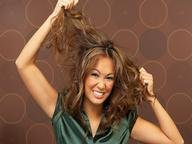Quiz Answer Key and Fun Facts
1. With which flowers did Egyptian decorate their assorted hair styles?
2. In Ancient Greece, wealthy women often sprinkled their hair with which product?
3. Very elaborate hairstyles in Ancient Rome were an indication of which feature in a woman?
4. On what part of their heads were Indian women expected to wear jewelled adornments in the period 1700-1100 BC?
5. Why did early Chinese women consider it disrespectful to cut their hair?
6. Women in Japan have worn a variety of adornments in their hair over time. One unusual one, however, took which precise shape?
7. Which hairstyle, or lack of same, was the part of Africa's Masai women once they were married?
8. Hopi maidens from the Americas wore a huge protruding circle on both side of their heads - known by what name?
9. Up until the 15th century in Europe, Germanic military leaders often wore their hair in which style?
10. What did the Catholic church want all women to wear on their heads during the medieval period?
Source: Author
Creedy
This quiz was reviewed by FunTrivia editor
eburge before going online.
Any errors found in FunTrivia content are routinely corrected through our feedback system.

